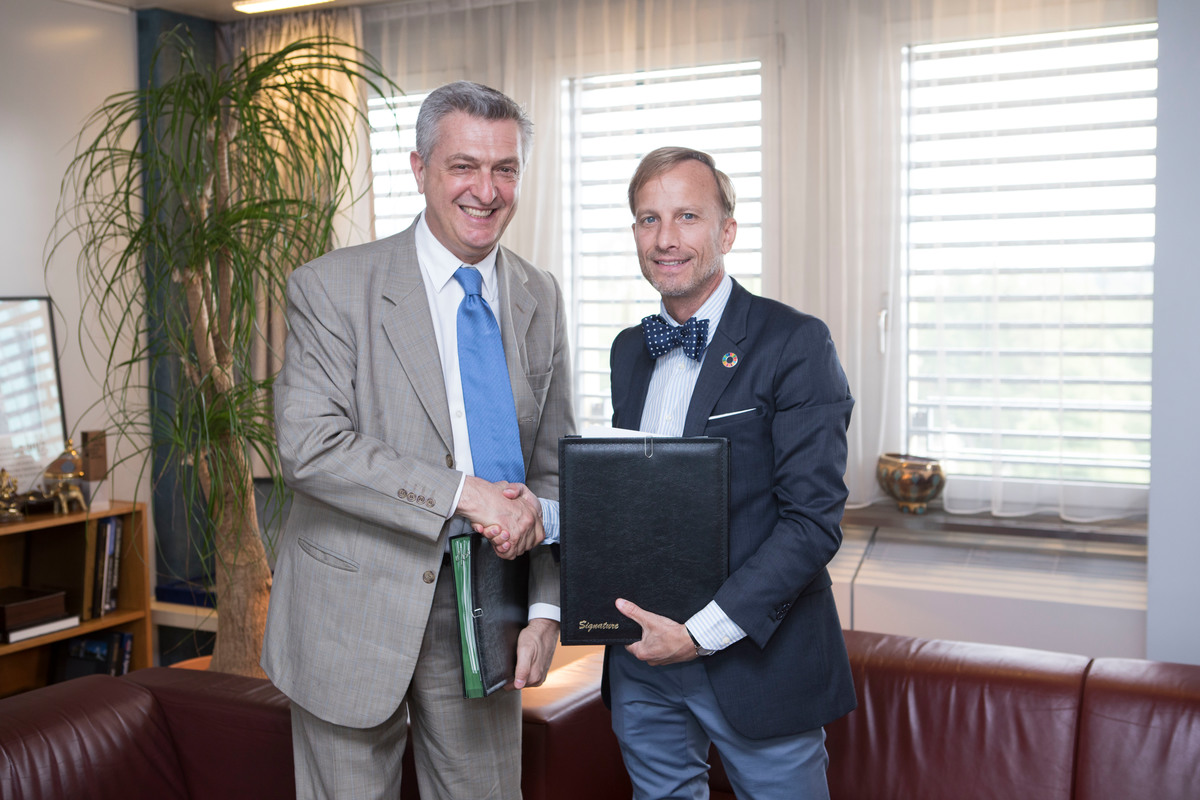World AIDS Day: Refugee boy in Namibia inspires AIDS Day poster
World AIDS Day: Refugee boy in Namibia inspires AIDS Day poster

OSIRE REFUGEE CAMP, Namibia, November 30 (UNHCR) - The 16-year-old refugee boy who inspired the UN refugee agency's poster for this year's World AIDS Day knows from personal experience the problems created by this feared and misunderstood disease.
"HIV and AIDS have affected many people," said Noel Valentim Cateia, the young Angolan living in Osire Refugee Camp in the south-western African nation of Namibia. "There was one person in particular I knew who died from AIDS. He was a good person and I depended on him for support and direction.
"Losing such a person is so painful and the family was stigmatized because this was a person who was a church leader," he said in an interview in Namibia's only refugee camp. "The people feel it's a failure and a shame on both the church and community."
Valentim participated in an art competition held by the UN refugee agency to design a poster to mark World AIDS Day this Saturday. His drawing of a couple in a traditional village setting was selected as the basis for the UNHCR poster used across Africa and at UNHCR's headquarters in Geneva. "I was trying to compete in different competitions so I was so surprised when they told me I had won the competition," he said. "I was so happy, even today I am so happy."
Valentim lives in Osire, Namibia's only refugee camp, with his parents, three sisters and four brothers.
"I ran from my country because of war when I was nine years old. I came to Namibia with my parents in search of safety," he said. "I am happy to be here where there is peace and protection. I attend school and there is support from UNHCR and the government of Namibia."
But, while the threat from war is gone, Valentim knows the refugees must act to combat another danger that faces everyone, as he makes clear in his poster. "The fight is for both men and women."
HIV/AIDS awareness, such as facts about the disease and use of condoms, is discussed at school and during activities elsewhere in the camp. In the camp's clubs for boys and girls, he says, the discussion of HIV/AIDS has increased peer pressure to delay the age of sexual activity and be faithful to future spouses.
The camp has a clinic providing HIV testing and a full-time HIV/AIDS counsellor. Valentim says refugees understand that HIV can be kept under control indefinitely by the use of anti-retrovirals and the steps that should be taken by pregnant women to ensure the safety of their future children.
Valentim has also participated in the efforts to combat the stigma associated with HIV/AIDS, one purpose in preparing the posters for World AIDS Day. As he discovered with the death of the church leader who had provided personal support, the myths and misunderstandings surrounding the disease remain an obstacle to controlling it.
"Although recently released UNAIDS/WHO data show that the global HIV incidence and prevalence has levelled off in recent years, AIDS remains the leading cause of death in Africa and a major burden on all continents," UN High Commissioner for Refugees António Guterres said in a message to staff for World AIDS Day.
"And while research shows that refugees often have lower HIV prevalence than surrounding host populations, circumstances favour an increase of HIV among persons of our concern if we do not implement effective prevention programmes," he said.
In Namibia, a surveillance survey conducted among antenatal patients in 2006 estimated an overall national HIV prevalence rate of 19.9%. There is no HIV prevalence data available for refugees in Namibia but the largest portion of its refugees have come from Angola, which has rates of under 5 percent.
"It affects my future in terms of the decisions I will make for my life," Valentim said of the efforts to curb HIV. "If many people will be infected a lot of resources will be used to support them and take care of orphans, so there won't be enough resources for other development activities."








